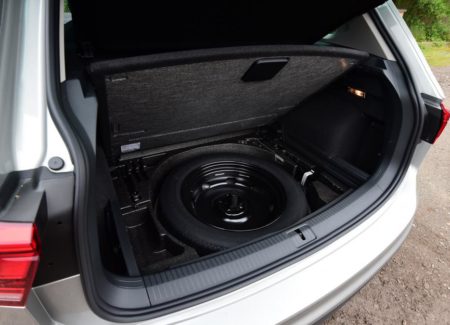
To the list of items you should no longer expect to see in a new car — those once-common features like a metal ignition key, an ashtray or a vent window that swings open — you may soon be adding the spare tyre.
Already, nearly a third of the 2017 models offered in the United States do not come outfitted with a save-the-day spare as standard equipment, according to a recent study by the American Automobile Association.
In truth, the extinction of the spare tyre has been happening, if gradually, for years. Full-size spares gave way to the space-saving “doughnut” versions you sometimes spot on vehicles traveling at worrying speeds. They, in turn, are yielding their under-floor real estate to no tyre at all.
The elimination of the spare by automakers is not entirely an abandonment of good sense or a severe example of cost-cutting; in fact, it can benefit drivers. The primary goal is weight reduction, a crucial factor in meeting fuel economy standards.
Removing a substantial amount of rubber and steel — up to 40 pounds, according to industry experts — along with a jack and a lug wrench is a big win for engineers who are conditioned to shave ounces wherever possible. But as appealing as it may be to skip the doughnut and lose a little weight, the disappearing spare can cause headaches: AAA said that last year it had answered roadside assistance calls from 450,000 members whose cars did not have spares — a situation that can mean a trip to the repair shop on a flatbed.
The freedom to eliminate spare tyres altogether is largely possible as a result of developments in tyre construction technology.
An increasingly popular alternative to spares is the so-called run-flat design, which most new BMW models use. Intended to make roadside tyre changes unnecessary, this solution employs a reinforced tyre sidewall that typically lets the driver continue for 50 miles at up to 50 miles an hour after air pressure is lost. But they can be more costly: It may be necessary to replace, rather than simply patch, a damaged tyre, and replacements are typically priced $25 to $50 higher than a conventional design.
Another alternative is the self-sealing tyre, an older solution reappearing in modern form on the battery-powered Chevrolet Bolt, where reduced weight translates to more miles per charge. Designed solely as an electric vehicle, the Bolt has no provision for carrying a spare. According to Michelin, which supplies the Bolt’s Energy Saver A/S Self-seal rubber, the extra cost of a self-sealing tyre — which can continue down the road even with a nail in the tread — is about $33 compared with conventional tyres of the same size.
But some models are losing the spare without the benefit of run-flat or self-sealing rubber, instead including conventional tyres and a leak repair kit — packaged in an aerosol can or used in conjunction with a small air compressor powered by the car’s battery.
Such kits skim weight while skipping the tyre, but have limited abilities to deal with any road hazard more serious than a nail hole in the tyre’s tread section. A larger tear in the tyre — something that can happen when modern low-profile tyres meet a pothole — or damage to the sidewall or wheel rim will not be fixed by a leak kit. The sealants, which are usually one-time use devices, have a finite shelf life — usually from four to eight years, AAA said — and cost about $40 to replace.
Even if a leak sealant kit gets you back on the road in a hurry after a minor puncture, it could complicate a permanent repair. Affixing an internal patch after a sealant has been used requires a thorough cleanup of all the goo inside, said Tom Carter, technical communications director for Michelin. For a car owner — and certainly renters who might not know what they are getting into — the best way to prevent an unpleasant middle-of-the-night surprise is to check for a spare and be sure that it holds air. If there’s a sealant kit instead, read the owner’s manual (which may be on a DVD or available on the car’s display screen) and learn how to use it.
In some cases, greater peace of mind is available from the automakers.
For instance, although mainstream versions of the 2017 Honda Civic come from the factory with space-saver spares, the Civic Si does not. A spare wheel kit, including a jack and tools, is available from Honda dealers as an accessory for the Civic Si at a suggested retail price of $254. The tyre, which must be purchased separately, runs about $115 from sources like Tirerack.com.
BMW offers a compact spare kit — including jack and wrench — for many of its X Series sport utility vehicles and for the 5 and 7 Series sedans. In most cases, it’s a $150 option when ordering the car, though on some models with conventional tyres it is free. On the sport utility models, the compact spare fits entirely within a compartment under the rear floor, but on the sedans it juts out too high, meaning the floor panel cannot lie flat.
Not surprisingly, independent online retailers have also emerged to fill the hole. Buyers should make sure to compare prices with the dealership and to determine that there is a storage spot in the car where the tyre can be secured. As designers work to smooth airflow under the car for fuel-economy improvements, those compartments are going away, too.
The disappearance of the spare tyre might be more than just an exercise in efficiency. It may be a sociological statement. A survey by AAA found that some 20 per cent of drivers do not know how to change a flat tyre, and with the rise of roadside assistance coverage for new cars, that number is unlikely to shrink.
The era of cars proudly displaying a spare tyre mounted on the front fender or rear bumper — a standby of prewar classics — is long gone, and the tradition of suburban dads gathering to inspect a neighbour’s new purchase may have to undergo a major change.
Instead of crowding around the front end to see what’s under the hood, perhaps they’ll be checking the trunk to see if it’s got a spare.
Source: Punchng.com (Culled from The New York Times)






